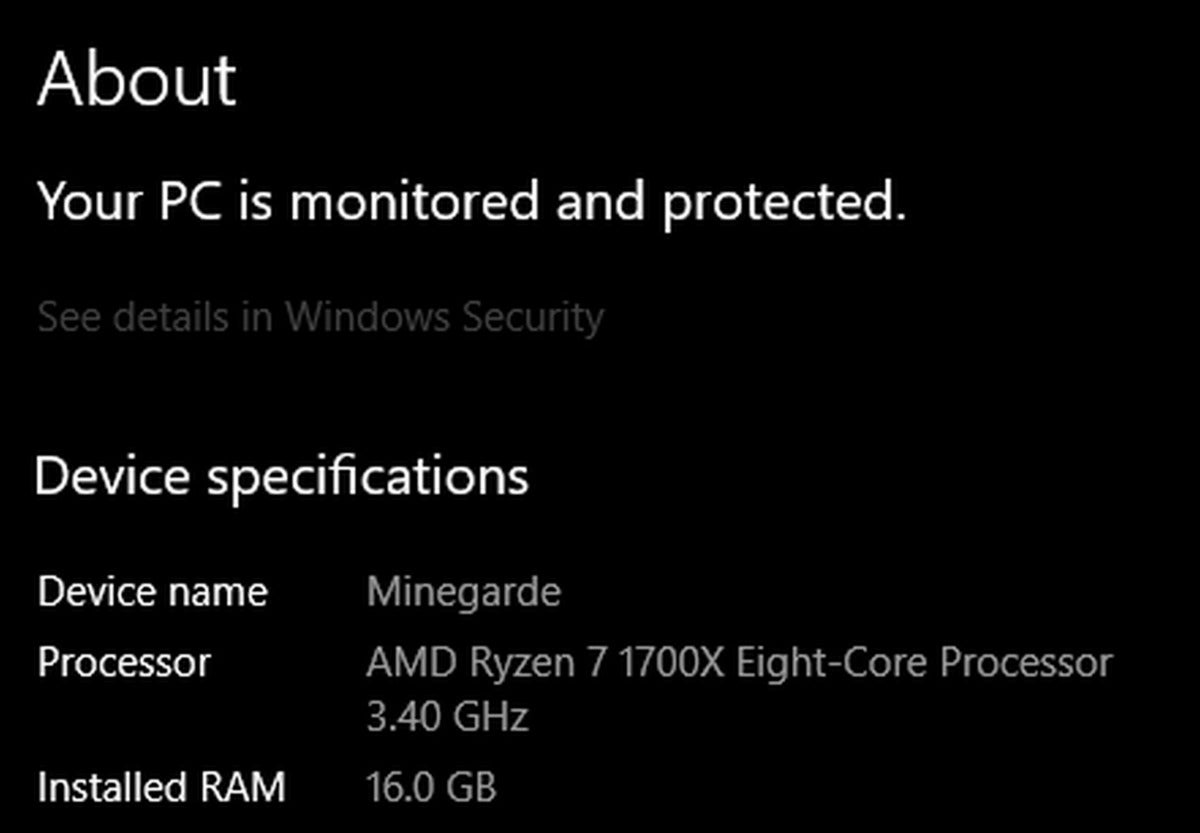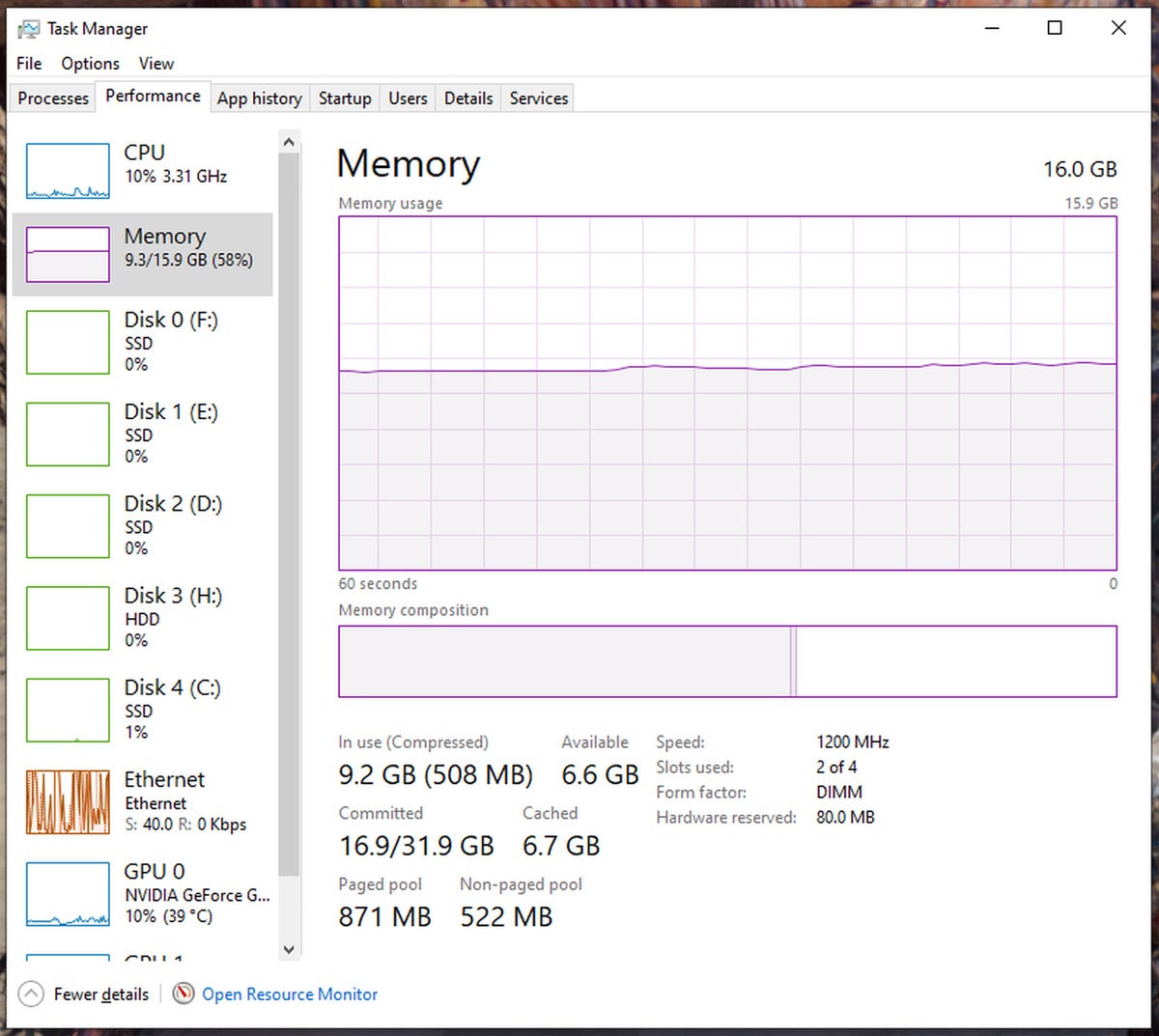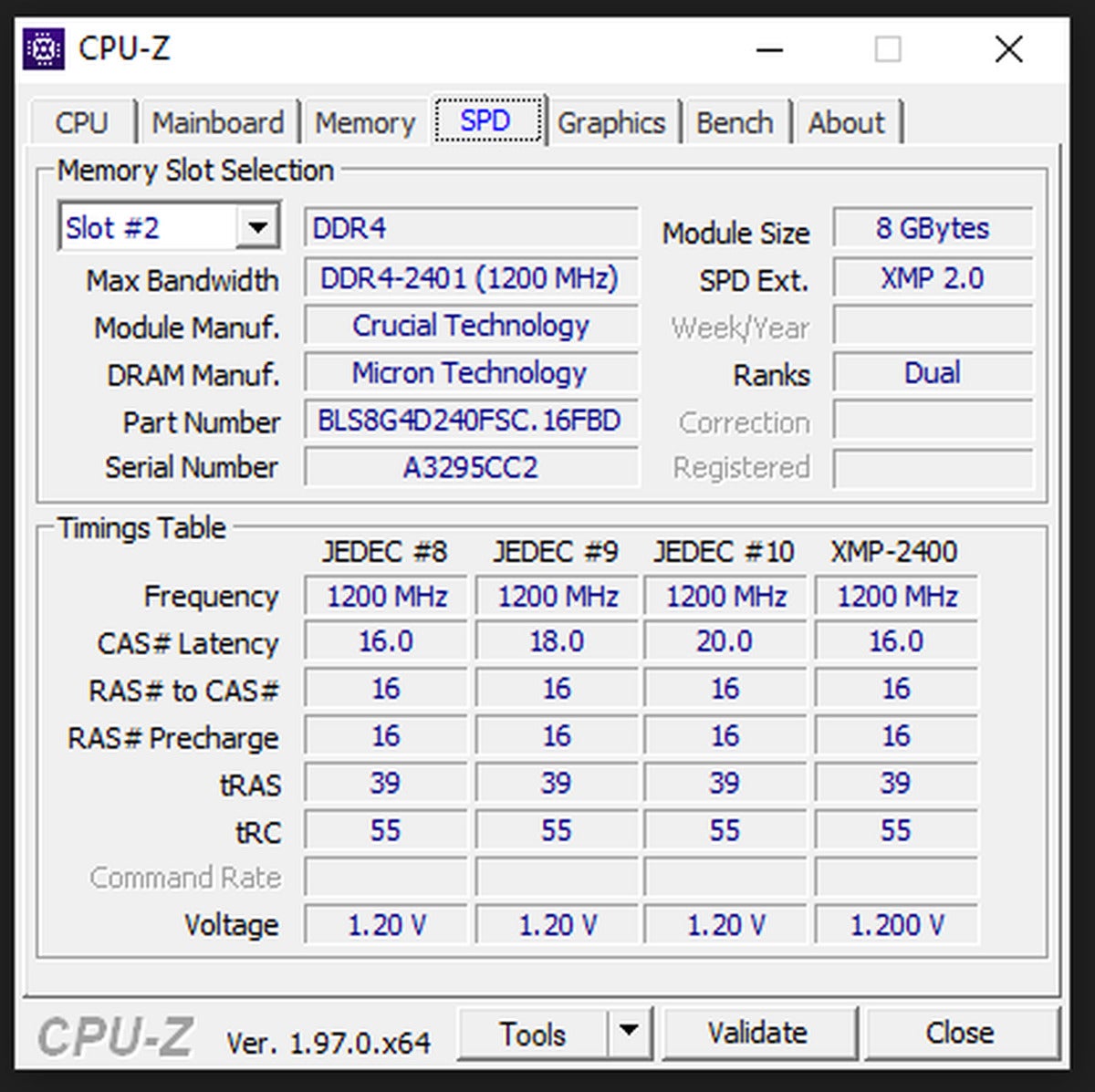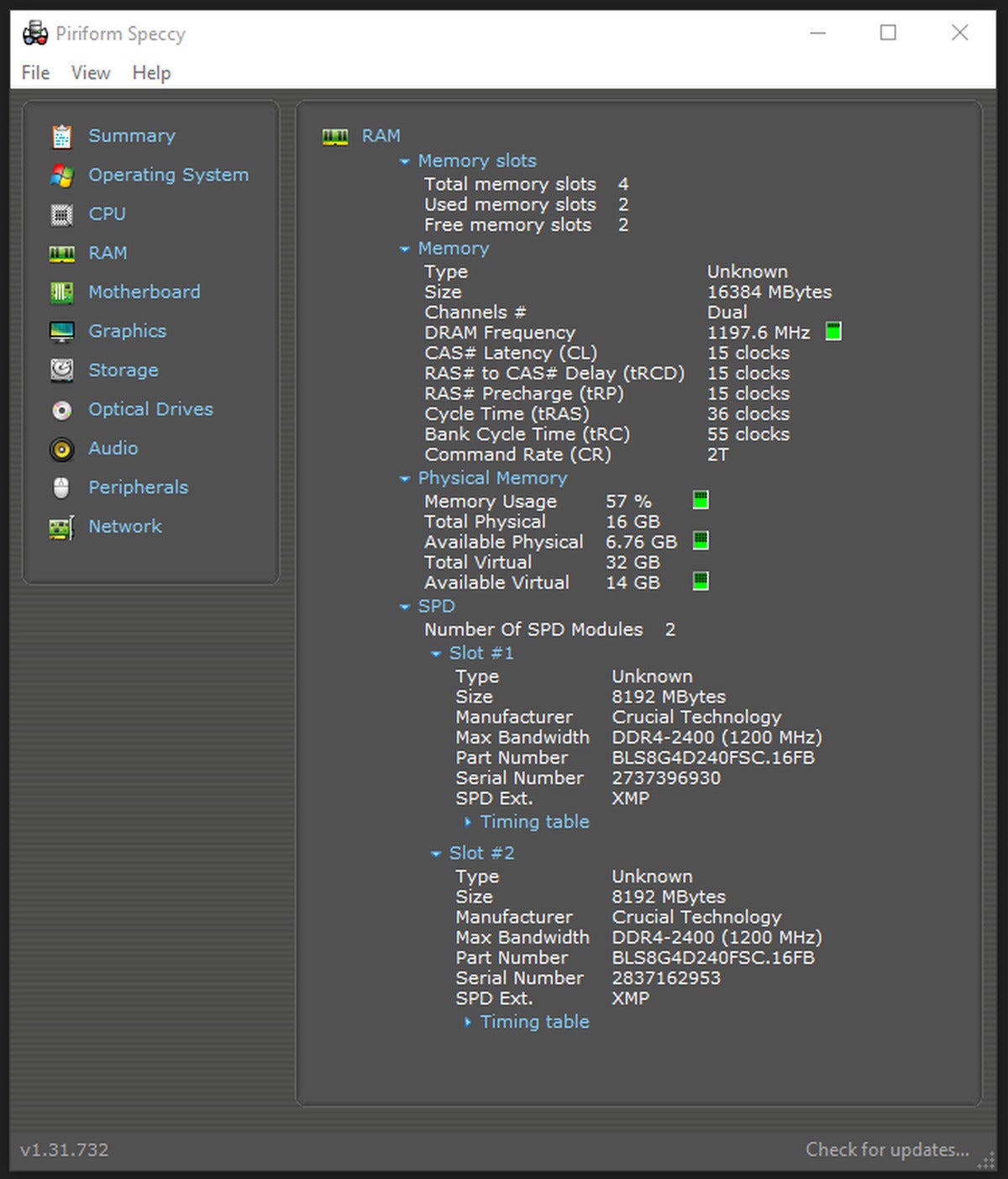How to Know What Type of Ram You Have
For a very long fourth dimension, the virtually common path to improving your PC's operation has been through upgrading the RAM. RAM stands for "random admission retentiveness" and it'south effectively the component of your PC that is keeping track of what your computer is currently working on. When RAM is limited, your PC has to keep that electric current information stored somewhere else, which can dramatically slow downwards your workflow and load times. This is peculiarly notable in computationally heavy projects, such every bit video encoding and high-quality art creation.
Whether you're looking to upgrade or y'all're looking to harvest the RAM from one PC to utilise in another, it helps to know what kind of RAM your system is using. There are a handful of means to figure that out!
In Windows 10
You can detect basic data about your RAM through your system's About page and through the Performance tab on your Job Manager.
 Kevin Casper/IDG
Kevin Casper/IDG Here are two simple methods to access the Well-nigh page:
- Printing the key combination Win + Interruption/Break
- Type "About your PC" in the Windows Kickoff menu search
 Kevin Casper/IDG
Kevin Casper/IDG To access the Task Manager, here are three uncomplicated options:
- Press the fundamental combination Ctrl + Shift + Escape
- Press the key combination Ctrl + Alt + Delete and select "Task Manager"
- Type "Job Manager" in the Windows Commencement card search
These two methods will provide you lot with the near simplistic view of your PC's RAM data, primarily showing how much RAM you currently take, along with some RAM speed information. If this isn't enough information for what you're looking to practice, so you may want to cheque out the Windows Direction Instrumentation command-line utility, or wmic.
 Kevin Casper/IDG
Kevin Casper/IDG In order to use wmic, you need to open a Command Prompt window, which is apace done by typing "cmd" into the Windows Start bill of fare search. Once in that location, you can employ a "wmic MemoryChip go" control to typically pull upward the information yous're looking for.
Y'all tin find a comprehensive set of properties to include on your "wmic MemoryChip get" command here, simply the post-obit should cover the applied bases for virtually RAM identification needs:
wmic MemoryChip get MemoryType, Capacity, Speed, Configuredclockspeed, DeviceLocator, FormFactor, Manufacturer, Serialnumber, Partnumber
This will provide a table with the following information, if it's available:
- MemoryType volition study back a number that aligns to a particular "type" of RAM module. 20 means it'south DDR memory. DDR2 is 21. DDR3 is 24. DDR4 is 26. Sometimes, this may show a 0. If so, you'll desire to use "SMBIOSMemoryType" instead.
- Chapters will show the raw byte value of the RAM's memory capacity, so something like eight,589,934,592 volition be for an 8GB RAM module.
- Speed is the supported memory speed value that your RAM module indicates it can back up, which is typically anywhere between 800 and 3200.
- Configuredclockspeed relates to the speed at which your RAM is currently configured to exist running at.
- DeviceLocator will tell you which concrete slot the RAM module is plugged into on your system's motherboard.
- FormFactor is the physical shape blazon of the RAM module. This volition typically exist the number 8 for DIMM modules found on desktop PCs or the number 12 for laptops' SODIMM forms.
- Manufacturer indicates an identified manufacturer of the RAM module. This may evidence up as Unknown sometimes.
- Serialnumber volition requite yous the hardware series number for that specific stick of RAM, which is typically but relevant when dealing with the manufacturer for troubleshooting purposes.
- Partnumber provides the manufacturer'southward model number for that particular RAM module, which tin be very useful with the help of a Google search to identify the RAM stick you have and whether or not you can buy it again.
Additional software options
Much of the above information is likewise bachelor with the assist of some third-party software, such every bit CPU-Z and Speccy.
 Kevin Casper/IDG
Kevin Casper/IDG In CPU-Z, yous'll want to utilize the "Retentivity" and "SPD" tabs to come across information about your RAM. Memory volition show you memory type and electric current frequency information. The SPD tab, which stands for "serial presence detect," provides information related to the RAM modules themselves including the manufacturer and function number data.
 Kevin Casper/IDG
Kevin Casper/IDG In Speccy, yous'll want to go to the "RAM" view from the left carte du jour. In in that location, yous should find virtually all of the RAM and memory data you'd need. You may need to expand the "SPD" driblet-down in order to get more specific data about the RAM depending on what you lot're trying to observe.
In Linux
Y'all tin can find virtually all of the information shown to a higher place via your Linux terminal by using the post-obit command:
- sudo dmidecode —blazon memory
This should provide a sorted list of information about your memory devices, aka your RAM, including size, types, and manufacturer data.
Physical RAM module
Most consumer RAM modules will come with a label to identify the type of RAM it is. Typically, these labels will either exist a sticker applied directly to the stick of RAM, engraved onto the fancy oestrus spreader on college-performance modules, or may be printed directly onto the excursion board. In these cases, yous'll typically find the role number, which you tin can and so look upwardly with your favorite search engine to effigy out the rest of the specs. If you lot tin can't locate a label or identifier anywhere, then it may be prudent to employ 1 of the methods described above instead.
These options should assist you figure out what RAM your PC is using. If you're looking to upgrade, be sure that you're getting the aforementioned type and form factor of RAM, because y'all can't direct swap out DDR3 for DDR4 RAM without having to also replace your motherboard. For more data on upgrading RAM, run across our guide on How to install new memory in your PC.
Source: https://www.pcworld.com/article/395053/how-to-tell-what-kind-of-ram-you-have.html
0 Response to "How to Know What Type of Ram You Have"
Post a Comment